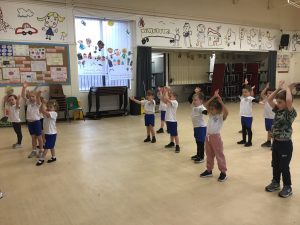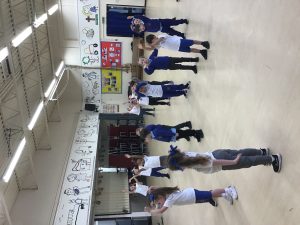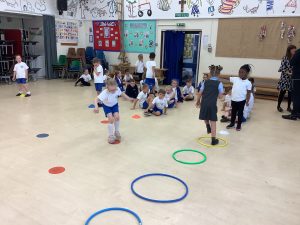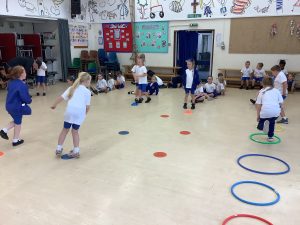Physical Education Lead – Miss Connolly
PE and Sport Premium Grant Expenditure
Report PE and Sport Premium Grant Expenitiure 5
Report PE and Sport Premium Grant Expenitiure 4
Report PE and Sport Premium Grant Expenitiure 3
Report PE and Sport Premium Grant Expenitiure 2
Report PE and Sport Premium Grant Expeniture 1
A high-quality physical education curriculum inspires all pupils to succeed and excel in competitive sport and other physically-demanding activities. It should provide opportunities for pupils to become physically confident in a way which supports their health and fitness. Opportunities to compete in sport and other activities build character and help to embed values such as fairness and respect.
National Curriculum (2014)
Curriculum intent:
In Saints Peter and Paul CPS we want our children to love physical education and sport. Our aim is to ensure children receive a broad and balanced curriculum so that they have the knowledge, understanding and skills to succeed in life. Also that they have the resilience and inquisitiveness to further develop their love of learning. We want to equip them with not only the minimum statutory requirements of the physical education National Curriculum but to prepare them for the opportunities, responsibilities and experiences of later life.
Curriculum implementation:
EYFS
In EYFS the children work towards the seven key areas of development. Physical development is the main area that links to PE. Physical activity is vital in children’s all-round development, enabling them to pursue happy, healthy and active lives. Gross and fine motor experiences develop incrementally throughout early childhood, starting with sensory explorations and the development of a child’s strength, co-ordination and positional awareness through tummy time, crawling and play movement with both objects and adults. These skills start in our 2 year old provision ‘Little Saints’ and are found within the areas Physical Development, Personal, Social and Emotional Development and Expressive Art and Design. EYFS classes also have allocated time in the hall to work on gross motor skills and basic skills such as running and jumping
KS1
In Key Stage 1 children are developing fundamental movement skills and are taught to master basic movements including running, jumping, throwing and catching as well as developing balance, agility and co-ordination and applying these when participating in team games. Our PE curriculum has been built and the learning opportunities and assessment objectives for each year group have been established to ensure progression and repetition in terms of embedding key learning, knowledge and skills. For example, we focus our teaching on five main strands of physical education; dance, invasion games, gymnastics, striking and fielding games and athletics.
KS2
Within Key Stage 2, children are taught to use running, jumping, throwing and catching in isolation and combination as well as developing their flexibility, strength, technique, control and balance. They apply these skills to competitive team games through the use of the scheme Get Set 4 PE. KS2 children also have the opportunity to take part in swimming lessons, where they are taught to use a range of strokes effectively over a distance of 25 metres.
In addition to this we provide mindfulness movement sessions for Year 2 and 6 in Spring term.
PE lessons are taught discretely but staff will sometimes make meaningful links across subjects (for example within Dance sessions). They link prior knowledge to new learning to deepen children’s learning. For example, in Year 3, the children were learning about places around the world in their Geography lessons therefore the PE lessons linked into these sessions as the children were taught different styles of dance from around the world.
Each class is timetabled to receive a weekly PE lesson, however other opportunities for physical fitness are available throughout the day such as The Daily Mile and after school sports clubs. Children are also encouraged to take part in intra and inter school competitions which enable them to grow in confidence and resilience as well as learning other key life skills such as team work.
Curriculum impact:
We use both formative and summative assessment throughout a half term for PE. The assessment objectives for each key stage have been mapped out and further broken down for each year group and each topic. This means that skills in PE are progressive and build year on year.
Our staff use PE assessment grids to systematically assess what the children know. The assessment criteria is based off the learning objective and key success criteria for each lesson. These assessment sheets then inform summative assessment judgements for each topic.
Assessment information is collected and analysed at the end of every half term. This process provides an accurate and comprehensive understanding of the quality of education in PE.
Click below to see an overview of PE in our school
Progress across the school:
What PE looks like in our school
EYFS


KS1


KS2


